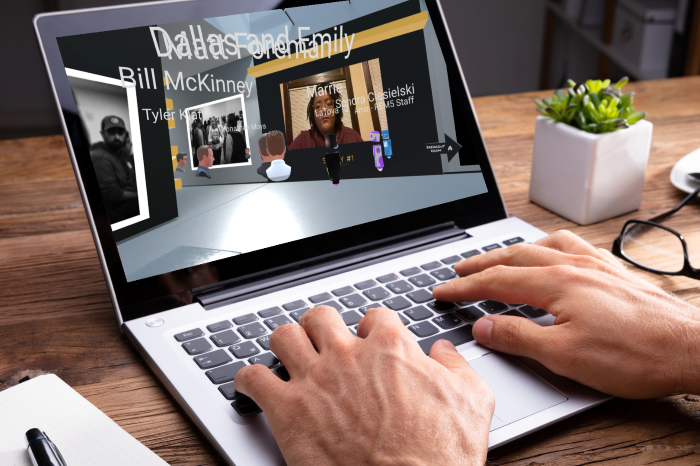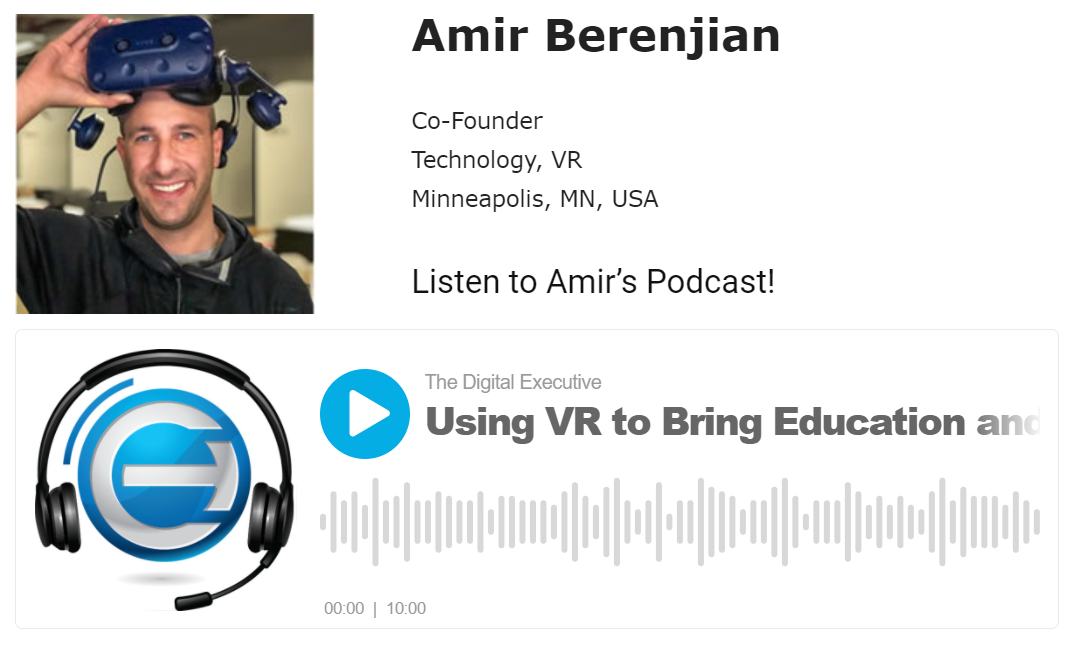|
If you’re like everyone else, the last 12 months have been both one big blur and filled with far too many video conferences. Nearly overnight, Zoom and other video conferencing tools became the norm for displaced workers to still connect and meet in the new COVID normal. Quickly, video became the norm even when the meeting could have easily been handled over email or a quick phone call.
In a recent study by the Stanford Virtual Human Interaction Lab, they note that video chat platforms, “have design flaws that exhaust the human mind and body.” They note the four reasons for this exhaustion: Close-up eye contact, seeing yourself in real-time, reduced mobility, and increased cognitive load. Now, amplify this over an entire year, and you can easily see why employees are so drained. Video conferencing is far removed from natural social interaction. As an innovative alternative, several companies have begun utilizing a new platform, WebXR, that combats many of the factors contributing to “zoom fatigue”. WebXR is an immersive, three dimensional, social experience that runs across devices (mobile, PC, and VR) right out of a web browser. Think of WebXR like a multiplayer video game that runs online. You control an avatar to move throughout space and talk with others. The really cool features include spatial audio and spatial presence, two things that you don’t get on traditional, 2D video chat. While WebXR doesn’t look to fully replace video chat, it does provide a unique and alternate option for companies and organizations in any industry. It sits nicely in between video chat and full virtual reality and the fact that it works on mobile and PC makes it just as accessible as your favorite video conference service. Now besides hosting more immersive, less tasking meetups, meetings, and social hours on the platform, it can also be used as a tool for content delivery in the format of speaker series, museum installations, and brand activations as well. Recently, Minneapolis-based XR Agency, REM5 STUDIOS, built out an entire Hall of Fame experience for the Minnesota Twins in WebXR. This allowed fans from all over the world to visit and explore together as long as they wanted, whenever they wanted. The 3D modeled space contained multiple clubhouses with shines for each player plus archival photos and video. Fans were even able to select avatars with Twins jerseys from over the years. It was an engaging and immersive brand experience that couldn’t be told any other way. The Twins and major sports teams are just one example of the unlimited use cases for WebXR. Earlier this year, Sundance Film Festival went all online with an impressive WebXR component for their New Frontiers section of the event. Another big opportunity is in the education and training space. According to PWC, immersive platforms allow participants to learn quicker and be more emotionally connected to the content. Museums can now deliver immersive content and extend their geography overnight. These types of experiences are just at their infancy and will live long beyond the “end” of COVID as a new tool to reach audiences both internally and externally for years to come. https://coruzant.com/virtual-reality/zoom-fatigue-is-real-why-businesses-are-innovating-with-webxr/ Virtual reality has been moving mountains across a myriad of verticals. In the past few years, we’ve also been seeing VR as a force for social good. REM5, a Minnesota-based company, is doing just that with a virtual exhibition space called “1 City. 2 Realities.” which is part of their REM5 For Good initiative. It illustrates and educates people on the realities of racial inequity and inequality across the nation.
Tackling Racial Inequity in Virtual RealityThis year on March 21, we celebrate the International Day for the Elimination of Racial Discrimination. The theme for this year is “Youth standing up against racism.” In the digital era, we’re seeing a new wave of activism and social movements, which rely heavily on technology to promote social, economic, as well as environmental change. According to REM5 co-founder, Amir Berenjian, they wanted to create a virtual space for sharing different stories about racism and discrimination. Also, they wanted to bring discussions about racial inequity to a meaningful space. Thus, REM5 For Good created “1 City. 2 Realities.”, which highlights the harsh truth about racial discrimination throughout the US. To make the experience as educational and immersive as a real exhibit, they used VR to power it. The immersive nature of VR makes it highly engaging. Additionally, it enables a forum for social interaction, allowing its users to start those difficult conversations about race and racism. As you enter the exhibition space, you can view the displays at your own pace. You can also engage with other users. Although you can only hear other users who are close to you in the virtual space, you can engage with anyone regardless of their location. The “1 City. 2 Realities.” exhibit even comes with a virtual idea board that you can follow using your mobile device. Virtual Reality as a Tool Against RacismREM5 For Good has two main objectives. They are as passionate about K-12 education and cultural competence as much as emotional intelligence education for large companies. They’ve worked with over 15,000 users and enterprises, such as General Mills, Target, Boston Scientific, and the University of St. Thomas. On Martin Luther King Jr. Day, Target and General Mills provided their employees with access to “1 City. 2 Realities.” This powerful tool helped raise awareness about racial inequity and racism by sharing real-life stories of racial discrimination. Moreover, it illustrated the impact of racism on communities. The virtual exhibit provides a safe space for participants to learn and reflect on their actions without fear of judgment. After every session, employees are given a chance to talk about their realizations and listen to others. From there, these institutions can work on addressing racial inequality within their respective systems. They can make positive changes to create fair and inclusive workspaces for their people. https://arpost.co/2021/03/21/virtual-reality-fight-against-racial-inequity/ REM5's Co-Founder, Amir Berenjian, joins Coruzant Technologies for the Digital Executive podcast. He shares how his technology is bringing education around social justice, inequality, and even Major League Baseball in an immersive VR space.
https://coruzant.com/profiles/amir-berenjian/ |
Archives
July 2024
Categories |



 RSS Feed
RSS Feed